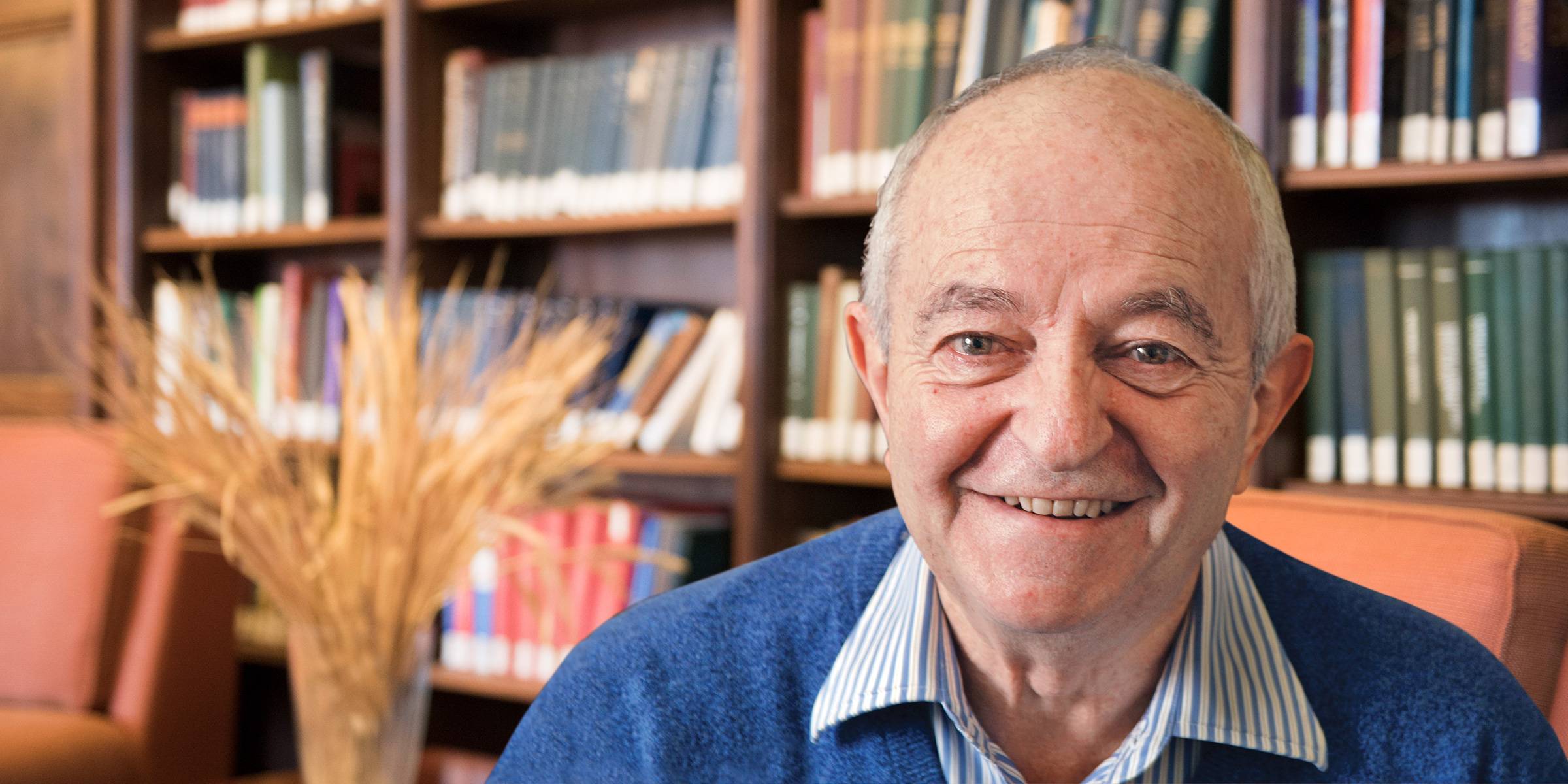Albert J. Libchaber, Ph.D.
Detlev W. Bronk Professor Emeritus
Many events that appear to occur at random, such as weather, are in fact part of recurring patterns subject to mathematical principles. Libchaber uses a type of mathematics called nonlinear dynamics to understand how an object and its surrounding environment act on one another to produce a specific result.
His work has examined the interactions between organism and environment, including the effects of moving boundary conditions on fluid flow. A moving fish, for example, involves a complicated interaction of a dynamic object with the surrounding fluid, with forces by both elements acting on one another. Additionally, Libchaber showed how temperature and oxygen gradients as well as bacterial concentrations finely tune and control the bacteria’s motility and genetics. The research established that an organism’s environment affects its genes and behavior.
In other work, Libchaber’s lab defined the minimal conditions needed to produce an artificial cell, which they then used to test different gene networks and elementary logic circuits for their ability to reproduce essential events in a cell’s life, such as producing proteins and transporting them to the cell’s surface. The lab also studied the origins of a genetic code that relates the 20-amino acid world to the four-nucleotide one. They showed that an RNA molecule of a stem-loop structure, acting as a ribozyme, can load an amino acid to its 3′ end. This amino acid corresponds to the anticodon in the loop, and this whole process can be done without enzymes. The research may hold clues to the origin of life.
Libchaber’s lab elucidated the effects of temperature on DNA in solution, shedding light on how critical concentrations of DNA may have been reached amid early primordial-soup chain reactions. The laboratory showed that DNA amplification by polymerase chain reaction is essentially a thermal convection process.
Currently, Libchaber’s work focuses on subsurface microbial ecosystems. Mud, a porous medium, contains a high density of diverse organisms. Despite this complexity, microbes in nature self-organize into simple reproducible patterns. His lab conducts experiments to observe and model the dynamics of mud coming to a steady state.
Libchaber received his Bachelor’s degree in mathematics from the University of Paris in 1956, his M.S. in physics from the University of Illinois in 1959, and his Ph.D. in physics from the University of Paris in 1965. From 1962 to 1974, he worked at the French National Center of Scientific Research. He was a professor at the University of Chicago and at Princeton University before joining Rockefeller as a professor in 1994. In 1986 Libchaber received the Wolf Prize in Physics and a MacArthur Fellowship, and in 1999 he was honored with a Prix des Trois Physiciens. He is a member of the National Academy of Sciences, the American Academy of Arts and Sciences, and the French Academy of Sciences.
